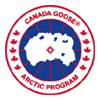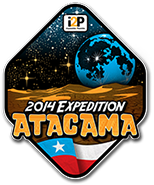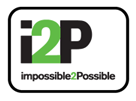
According to the Boshongo people of central Africa, in the beginning, there was only darkness, water, and the great god
Bumba. One day Bumba, in pain from a stomach ache, vomited up the sun. The sun dried up some of the water, leaving
land. Still in pain, Bumba vomited up the moon, the stars, and then some animals. The leopard, the crocodile, the turtle, and
finally, man.
This creation myth, like many others, tries to answer the questions we all ask. Why are we here? Where did we come from?
The Atacama Desert is one of the best places on the planet to view the night sky. Universities from all over the world have
telescopes built high in the mountains that rim the desert. These scientists are asking the same questions humans who have
looked up at the stars - why are we here and where do we come from?
The theme of the Spring 2014 i2P youth expedition to Chile’s Atacama Desert is the “Origins of the Universe”. During the
expedition i2P will consider how was the universe formed, what the basic building blocks of life are, and if there is life on
other planets.
Education Program
DAY 1: Positional Astronomy (naked-eye Astronomy)
Positions and motions of celestial objects. What can you see with the naked-eye. Moon, planets, about 3,000 stars with your unaided eye. Introduction to colour dif- ferences, what they mean, star clusters, nebulae, galaxies, transient sightings (mete- ors, comets). +star navigation activity
DAY 2: Newton’s Universe
Key concepts Newtonian physics revolutionized the way we understand the Universe. The basics of Newton’s laws of mechanics, the conservation laws that follow from them, theory of gravity and it’s applications to Astronomy, what followed Newton. Earth rotation, formation of the moon.
DAY 3: Planets
What are the properties and structure of our Solar System and our understanding of its origins and history? We will end with some discussion of the exciting discoveries over the past decade of many hundreds of extrasolar planets.
- What are the elements in the universe that gave rise to life?
- Is there life on other planets? Is it intelligent?
- What are the prospects for life on other planetary bodies in our Solar System and how
do we go about searching for it? What conditions are required for a planet to be
habitable?
- How do we search for Earth-like planets orbiting distant stars and how would we
detect life on them? Have we found any yet? How far are they?
- What are the possibilities for intelligent life elsewhere? How would we deal with
contact with an extraterrestrial intelligence and what would be the impact on society?
Stephen Hawking suggests trying to find intelligent life in the universe is a bad idea. “We only have to look at ourselves to see how intelligent life might develop into something we wouldn’t want to meet”Who would
represent Earth?
DAY 4: Stars
Introduction to the Sun our best known star. What is a star? Are there different types? How long do they burn? What are they made from? Star classifications; distance, mass, and size measurements; clusters; and stellar
evolution.
DAY 5: Exploration
Space exploration, early steps, milestones, the future of exploration, pop culture
DAY 6: Galaxies and Black Holes
What is a galaxy? What is Galactic structure and classification. Active galactic nuclei, quasars and blazars. Galactic rotation curves and dark matter. Galaxy clusters and large-scale structure.
DAY 7: Cosmology and Relativity
What we can say about the universe as a whole? Its birth, growth, shape, size and eventual fate. Hubble and the Expanding universe. Big bang cosmology. The cosmic microwave background. Early universe physics. social justice, economics of space. Origins of different sciences, impact on society, literacy.
Supporting Videos
How i2P Education Works
Twice a year impossible2Possible selects five lucky youth between the ages of 17 - 21 to serve as 'Youth Ambassadors' on expeditions designed to complement school curriculum. Youth Ambassadors serve as the eyes and ears of students following in classrooms, relating to them real life learnings they experience in the field. Each remarkable expedition route is carefully chosen to highlight an academic curriculum designed by i2P and Simon Fraser University. State of the art information technology; video, text, images and sound allow Youth Ambassadors and participating classrooms to communicate from the field through social media sites and the i2P expedition website. The real life experience of an i2P expedition awaken and enhance a students' interest in the core curriculum of primary and secondary school education.
For More Information
Matt Howe
i2P Educational Coordinator and Logistics
mhowe@impossible2possible.com
612-508-5555
Jordan Thoms
i2P Social Network Advisor and Logistics
jthoms@impossible2possible.com
613-302-5572








